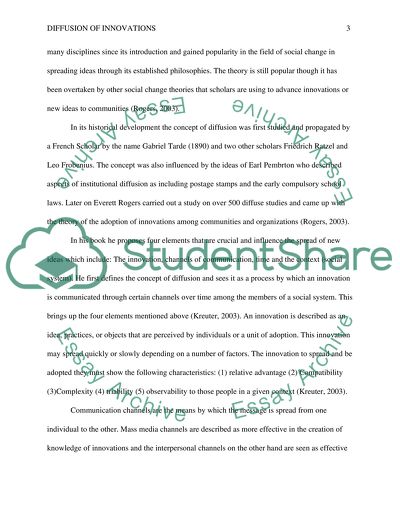Cite this document
(“Diffusion of Innovations Theory and Applications Essay”, n.d.)
Retrieved from https://studentshare.org/nursing/1446487-final-change-theory
Retrieved from https://studentshare.org/nursing/1446487-final-change-theory
(Diffusion of Innovations Theory and Applications Essay)
https://studentshare.org/nursing/1446487-final-change-theory.
https://studentshare.org/nursing/1446487-final-change-theory.
“Diffusion of Innovations Theory and Applications Essay”, n.d. https://studentshare.org/nursing/1446487-final-change-theory.


